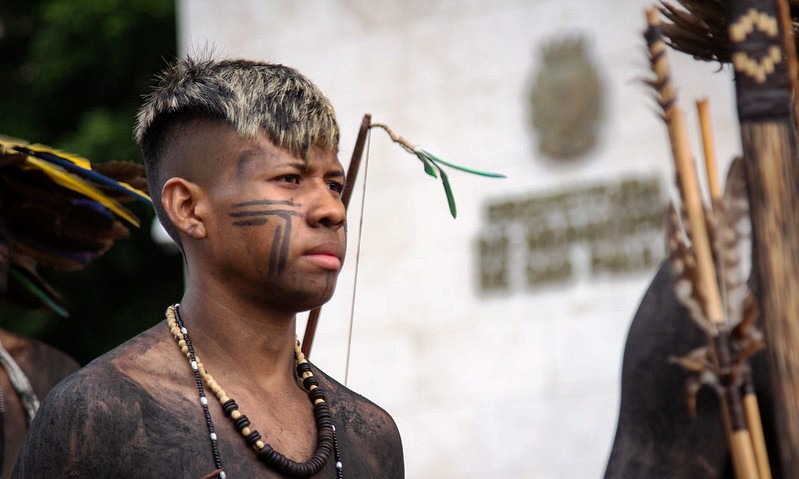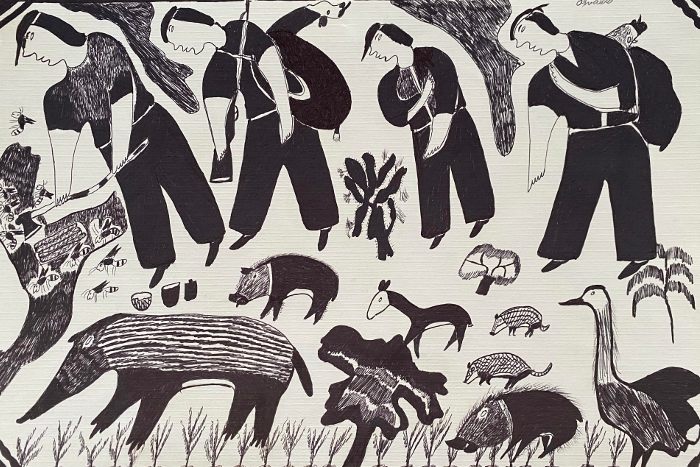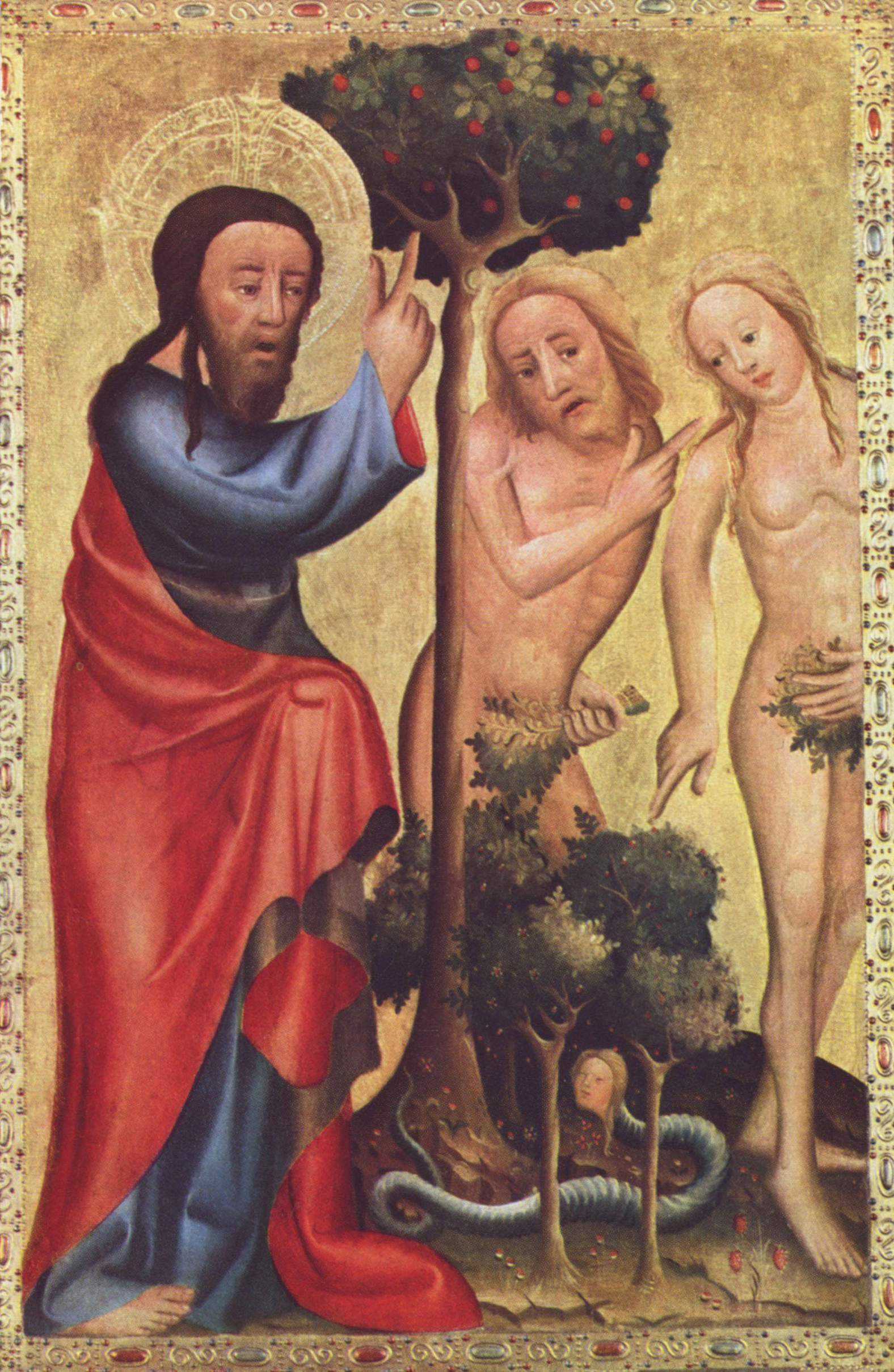"Serpent": A Thought-Provoking Indigenous Poem
Posted on October 07, 2021

With Indigenous People's Day approaching on the 11th, we thought it was a good time to re-post Sonia Adams's article about Alberto Luna's "Serpent," translated from Guaraní by Susan Smith Nash and Susy Delgado —Eds.
"There is no serpent." From the very first line of the poem “Serpent,” Alberto Luna's "Serpent" captures readers’ attention. He also challenges us as readers to grapple with the meaning of the line. First, what is this "serpent," which the narrator assures us is not there?
Before we can answer that question, we need to better understand the historical and cultural origins of the poem. "Serpent" is being published in English as part of the magazine Words Without Borders' recent issue of Contemporary Guaraní Poetry. The term Guaraní (pronounced gwa-ra-NEE) refers to both a set of languages and an indigenous cultural identity.
Like many indigenous peoples in the Americas, Guaranís experienced colonization at the hands of Spanish colonists. This included enslavement, land theft**, and the forced conversion to Christianity, among other oppressions. (This history of Spanish colonialism is also more complex than a blog post can hope to encompass.) The influence of Catholicism among Spanish colonial territories wrought a social and cultural shift in the lives of Indigenous people. There were Jesuit priests who protested the enslavement of Guaranís, which both mitigated that power structure, but enabled a new wave of religious conversion.
Jesuit missionaries named their Indigenous converts ‘Guaraní’ to both designate and distinguish them from ‘Cayua’, Indigenous people who contested the Catholic religion. The act of naming by the Jesuit missionaries signifies the power that Spanish colonial language had in creating social and cultural divisions amongst the Indigenous people they encountered. It also preludes to the onset of colonial and Indigenous languages merging in the Americas.
Although many Guaranís adopted Christianity and other aspects of the Spanish colonial culture, they were also able to maintain strong connections with their Indigenous roots, and successfully advocated for Guaraní culture in the post-colonial era. Today Paraguay's two official languages are Spanish and Guaraní, and Catholic and Indigenous spiritual practices like shamanism are often intermingled.

Some theorists and critics contend that the impact of colonial language on Indigenous language can utterly obliterate it. However, scholar Elisa Taber asserts in the issue introduction, that although these languages are subject to the pressures of a homogenizing "Westernization,” they are far from being lost to time and ancestral history. In her introduction, Taber opposes the idea of a "dichotomy between Spanish and indigenous languages," positing instead "a multilingual approach to national literature," in which boundaries are blurred and cultures are mutually enriched through their interplay. The poem “Serpent” speaks to that interweaving of cultures with imagery that evokes both Guaraní mythology and the Biblical story of the forbidden fruit, while also claiming the right to transcend both traditions:
There is no serpent.
I alone
plunge my roots
and outstretch my branches.
I alone am for myself
fruit of intense sweetness,
I alone, facing myself,
make my mouth water
and lick my lips.
I alone, before myself,
beg myself for a blessing
and sanctify myself.
I alone put in their place
the bad and the good,
I alone am my own master.
I don’t need God.
Two Traditions
In Guaraní mythology, the serpent figure, Moñái, has the power to hypnotize humans, which allows him to hunt them down, and steal their belongings with ease, and hide his loot in a cave. The first line of this poem reads almost like an incantation against this symbol of deception and concealment, asserting that there is no serpent—nothing to fear, no reason to hide.
The reference to water also resonates with Guaraní mythology and history. Traditionally, the Guaraní people in what is now Paraguay lived between two great rivers: the Uruguay and the lower Paraguay. These rivers were essential elements in the physical and spiritual life of Guaraní communities; but during the colonial era, Guaranís were forcibly uprooted from these spaces. The speaker of "Serpent" seems to reverse this uprooting, re-planting himself in the ground and licking his lips: the water produced by his own body "sanctif[ies]” his choice to pursue physical and spiritual freedom.
For some readers, the poem's imagery may also evoke the Old Testament story of Eve's temptation in the Garden of Eden, with its serpent (an incarnation of the temptation to evil), tree, and apple—perhaps indicated here in the line about the "fruit of intense sweetness." The serpent tricks Eve, who later urges Adam to eat this fruit with her. In the poem, the speaker liberates himself from the legacy of Adam and Eve’s sin. He claims spiritual freedom.

The Indigenous and Catholic traditions, then, are not opposed but rather interwoven in this poem: so closely interwoven, in fact, that it is impossible to know for certain where one ends and the other begins. Students may be interested to learn that Alberto Luna is a member of both the Guaraní and the Jesuit communities: an Indigenous-language writer and a practicing Catholic pastor.
In "Serpent," the speaker boldly claims for its speaker a new identity that encompasses—but also transcends— both spiritual traditions. In its use of anaphora, with the repetition of the declarative phrase "I am," the poem claims an autonomous identity for its speaker. The speaker's forceful tone and defiant stance towards the traditional dichotomy of Good and Evil amplifies this poetic ‘I’, validating the speaker's existence as an autonomous being: "I alone put in their place / the bad and the good."
Translating a "Serpent"
The poem went through a two-step translation process: first, from Guaraní in Spanish, by Susy Delgado; and then, from Spanish into English, by Susan Smith Nash. It is available in all three languages on the Words Without Borders website.
Translation of the Paraguayan Guaraní language into the English language raises the issue of colonial control. The possibility of losing the accentuation and specificity of Indigenous words and phrases is of great concern in translating Guaraní poetry. However, in “Serpent," socio-cultural references come across clearly and strongly—if ambivalently, as we will discuss below.
In addition to the instructional options and resources provided below, WWB has published a sound file of the poet Alberto Luna reading "Serpent" (or "Mbói") aloud in the original Jopará Guaraní.
Teaching "Serpent"
For educators, this poem offers several approaches across literature, social studies, and history courses:
- Research a specific Indigenous culture as part of a unit of study on the history of the Americas. The poem could be the starting point for a deeper exploration of Guaraní culture, history, and contemporary life; or for a comparative reading of the ways in which Guaraní and other Indigenous cultures intersect with national identities on the continent. Students can then use their research to create a profile of their chosen Indigenous culture, documenting historical facts as well as customs and values comparable to contemporary Guaraní life. (For example, although Mexico is home to 63 Indigenous languages and thriving Indigenous cultural movements, the only official language is Spanish.)
- Explore universal questions about values and identity, perhaps in the context of a literature or writing course. The poem seems to invite readers to match the narrator's boldness and seek out their own values: an important part of identity formation for young adults. As a culminating project, students might write their own poems or letters of self-determination, including references to their own cultural roots. Or, students might create identity charts, visual representations of their identities.
- Explore media coverage of Guaranís in contemporary times. Students can conduct online research for news articles published within the past five to ten years. They can then write an editorial based on their selected article, assessing the writer’s topic, point of view, use of evidence, and textual and visual features.
In the resource links below, you will find materials to support both of these approaches. (And for descriptions of how you might use these resources in the classroom, see "Annotated List.")
Connections to Other Literature and Music
On WWB and WWB Campus:
- Other Guaraní poetry published in Words Without Borders
- Indigenous poems from Mexico: Marías Mazahuas, Nothing Remains Empty, Purépecha Mother, Dreams and Memories of a Common Man
- I Am Not Your Cholo, an essay on indigenous Latinx identity
Elsewhere
- “Liftun / Purification”, an indigenous-language rap (or rap originario) by the artist Soler Minute
- Poems 2 and 3* from "Three Poems" by Enriqueta Lunez, translated by Clare Sullivan and published in Latin American Literature Today
Alice Eather's “Yúya Karrabúra” (Fire is Burning) which appears in a captioned author reading on YouTube and as part of Eather’s essay in the anthology Growing Up Aboriginal in Australia (pp. 76-85). Like the speaker of "Serpent," Eather's speaker claims autonomy in being her authentic self.*
- Borderlands/La Frontera: The New Mestiza by Gloria Anzaldúa, Chapters 2 & 5. The free Annenberg educational video series "American Passages" features Anzaldúa in Episode 2
- Two other poems celebrating self-actualization: Phenomenal Woman by Maya Angelou and Section 1 of Song of Myself*, by Walt Whitman
Connections to Visual Arts
Connecting Luna’s poem “Serpent” to visual works of art fosters critical reading practices, helping students make inferences about themes such as identity and culture, and to compare literary with artistic techniques (for example, to compare repeated shapes with repeated words.)
- Untitled (2019) by Osvaldo Pito, with its tree evoking agricultural traditions
- Temple of the Self by Steve Elmore, and The Temple Within by Shilo Ratner, both of which connect to the theme of spiritual and physical autonomy.
Informational Resources on Guaraní Culture and Recent History
- Ñe’ ẽ: An Introduction to Contemporary Guaraní Poetry, by Elisa Taber (A scholarly essay; recommended for educators more than for students)
"Guaranís," Worldmark Encyclopedia of Culture and Daily Life
"Y’apo guaraní continue the fight for recognition of their land and human rights" a 2014 article from culturalsurvival.org
"Along Yvyrupa’s Paths: Beyond Borders," by Maria Inês Ladeira, from Revista magazine's spring 2015 issue: Territory Guarani (PDF)
The Indigenous Tribes Fighting to Reclaim Stevia From Coca-Cola, a 2019 article on Guaraní activism published on Atlas Obscura
The Gods of Creation and Legendary Beasts of the Guarani, an article from the "Pop Archaeology" site Ancient Origins.
* See the Annotated Resource List for a full discussion of how this work might be compared to "Serpent."
** The theft of land by Spanish colonists has modern-day repercussions and is being challenged by the land rights movement (see articles above.) Alberto Luna has also written on the issue. —Eds.

Sonia Adams is an educator, writer, and PhD candidate from New York City. Her scholarship is centered on contemporary multi-ethnic and global women’s literatures in the U.S, English Studies Critical Pedagogy, and curricular development.



